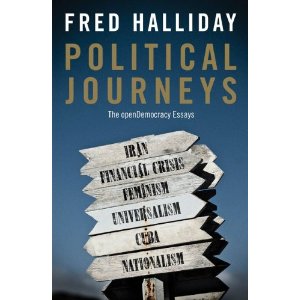Scientists often complain about the rising influence of mystical and religious beliefs, a trend they regard as detrimental to scientific inquiry. Since at least the mid-1970s, a common feature of science's public profile is for a leading practitioner to denounce beliefs in (for example) astrology or "alternative" or "parallel" medicine, and lament the public's ignorance of true science.
The most high-profile example (though far from the only one) is Richard Dawkins, whose prolific and relentless pursuit of unreason has won him both acclaim and execration. But this very polarisation of response indicates a problem in the way that the issue of science and mysticism is presented and discussed in the public arena. The media's preference for sound and fury over calm, logical, evidence-based argument, and the temptation even among serious intellectuals to allow provocation and polemic to lead their case, means that the question of whether scientists' own indulgence in mysticism can undermine the integrity of their profession goes undiscussed.
In this short article I highlight the way that some credible scientists contribute (knowingly or not) to fuelling irrational, mystical tendencies in public life. The fact this is so often done in the name of making science attractive to non-scientists only makes the damage harder to repair.
God: a good career move
The past generation has been notable for the way that well-known scientists (generally physicists) have published an increasing number of books with attractive titles that suggest a close relationship between the worlds of science and religion-mysticism. The genre originated with the publication in 1975 of Fritjof Capra's book, The Tao of Physics, which suggested that the equations of quantum-field theory were somehow related to ancient, mystical Indian texts. This book struck me then (and still does) as a monumental joke, though its commercial success - it is in its forty-fourth edition - indicates that it hit a seam of public longing.
Yves Gingras was trained as a physicist and then in
the history of science. He is now Canada
Research Chair in the history and sociology of science at
Université du Québec à Montréal, and scientific director of the Observatoire
des sciences et des technologies. His latest book is Eloge
de l'homo techno-logicus (Montreal, 2005)
Also by Yves Gingras in
openDemocracy:
"Nobel by association: beautiful mind,
non-existent prize" (23 October
2002)
"Against this taken-for-granted ‘fact', I am arguing here that
this prize - the 'Nobel Prize in Economics' - does not exist: and moreover, that
this so-called 'Nobel prize' is an extraordinary case study in the successful
transformation of economic capital into symbolic capital, a transformation which
greatly inflates the symbolic power of the discipline of Economics in the public
mind."
Where Capra led, others followed. Paul Davies's God and the New Physics (1983), Leon Lederman & Dick Teresi's The God Particle (1993) and Frank Tipler's The Physics of Immortality (1995) were part of a developing genre that associated modern science with vaguely articulated religious and mystical concepts.
The fertile collusion between authors, publishers and publics in this area is revealed in the useful button on the Amazon website which allows the prospective customer to view "co-purchases": that is, other titles bought by purchasers of a given book. It is interesting to note that (at least on a very recent visit) those who bought The Physics of Immortality also acquired The Anthropic Cosmological Principle (co-written by Frank Tipler & John D Barrow), a book extolling an anthropomorphic and determinist vision of nature which sees nature's invariant laws as somehow "presupposing" our existence.
This bizarre and clearly non-scientific idea has been widely debated by scientists, though there is little recognition of its affinity with "intelligent design" - a doctrine that is the very negation of science, which is by definition a naturalistic endeavour in that it searches for natural (as opposed to supernatural) causes.
Any reference to God must therefore be excluded by definition from scientific work. Amazon tells a different story. The "co-purchases" of The Physics of Immortality include Paul Davies's The Mind of God (1992) and The Fifth Miracle (1998) as well as God and the New Physics. What these books do is try to wrap modern scientific discoveries in an allusory shroud that insinuates a link between cutting-edge science and solutions to the mysteries of life, the origins of the universe and spirituality. They depend on cultivating ambiguity and a sense of the exotic, flirtatiously oscillating between science and the paranormal. This is X-Files science - and The X-Files is science-fiction.
Science and transcendence
There are other precedents for such indulgent efforts to employ scientific notions to "re-enchant" the world - though unfortunately they too are non-scientific ones. They include Louis Pauwels & Jacques Bergier's The Morning of the Magicians (1964) and Robert Charroux's The Book of the World's Masters (1967) and The Book of Revealed Secrets (1970). The major difference is that today the idea of an association between science and mysticism is now promoted by respected scientists rather than by journalists or charlatans - guaranteeing it more credibility than these earlier authors ever had.
There is a practical dimension to all this, for forging a connection between science and (in particular) religion can help win research funds. In the United States in 1993, physicists sought to win public support for a (failed) effort to persuade Congress to support the $12 billion construction of a "superconducting super-collider" machine, which theorists predicted was capable of discovering the Higgs boson - the elementary particle which might open the way to understanding the origin of mass in other particles (and more generally, of the universe - hence the metaphor of "the God particle"). Some scientists at the time thought that such metaphors were inappropriate and could backfire, though it is only fair to add that its co-author Leon Lederman was echoing his fellow-physicist Stephen Hawking, who once said that he had been able to see God in his equations.
Moreover, organisations such as the John Templeton Foundation (established in 1987, and devoted to promoting links between science, theology, spirituality and religion) offer annual grants worth hundreds of thousands of dollars to support such studies. This foundation has since 1973 awarded an annual prize (currently £800,000) to a living person who has advanced "progress toward research or discoveries about spiritual realities". The 1995 recipient of the Templeton prize was Paul Davies, whose work (says the encomium) "has initiated a new dialogue between science and religion that is having worldwide repercussions".
This author's ingenuity in producing a series of titular variations on the theme of "God," "science," "spirit" and "miracle" is admirable - and influential, as the title of Richard Dawkins's latest book, The God Delusion, suggests. But for a well-known physicist to use science to feed the popular hunger for re-enchantment is - without doubting the sincerity of his beliefs or his project - to lend credibility to irrationalism.
Science and humility
The problem is not in the stars, but in ourselves. Scientists should challenge the indulgence of mysticism in their own backyards. For example, the journal Science devotes one-and-a-half pages to a review of The Physics of Immortality which offers no critical perspective on its fundamental thesis, and neglects to point out that its dozens of pages of equations (incomprehensible for most readers) are mere "fluff" that have nothing to do with the soul's immortality; they serve only an attempt to "blind the reader with science".
Also in openDemocracy on the frontier between
science and faith:
Michel Thieren, “’Terror doctors’: anatomy of a void
concept” (12
July 2007)
Debora MacKenzie, “A prescription for terror” (30
July 2007)
It seems to me that scientists involved in popularisation have an obligation to present science as the naturalistic enterprise it is, instead of attempting (cynically or naively) to stimulate interest in science by associating it with vague spiritual or religious notions. This eye-catching genre can only generate bitter disappointment among those motivated by it to pursue the study of science; for they will quickly learn that they will never meet God in a particle accelerator or in a DNA sequence.
The essence of science is a naturalist vision of the world that makes it understandable without any appeal to transcendental intelligence, be it Zeus, Poseidon or any other God. It does not seek to, nor can it, explain everything: the ultimate meaning of life will always remain outside its realm. Scientists who acknowledge this would gain respect for themselves and bring honour to their profession. They might even become popular.










 Paul Rogers
Paul Rogers Li Datong
Li Datong Mary Kaldor
Mary Kaldor

